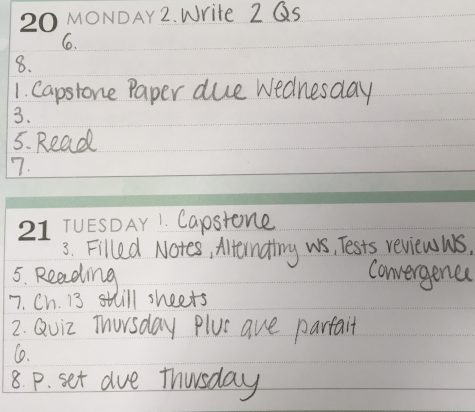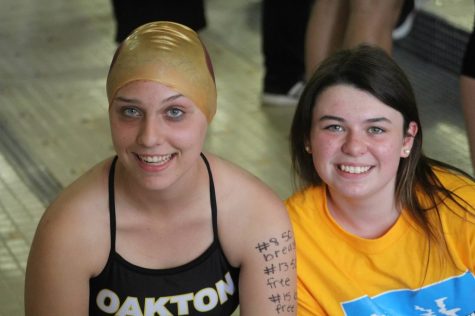Treat yourself to a break
Stress from exams and tests can make students want to keep working, but it’s better to take a break
The end of third quarter is one of the most stressful times of the year for any high school student. With teachers cramming multiple tests and projects into the quarter before spring break, it is hard to maintain it all. Your planner could look a little bit like ~this~:

This larger than average workload can cause a large magnitude of stress for students. In addition, students in AP courses are being encouraged to study for their exams now, with the first day of the testing period in just over a month.
Students, at this point, typically feel like it’s better to cram all of their work into the time they have. By constantly working, either without breaks or sleep at night, students can get a majority of the work done so there isn’t as much to do the next day. However, this is not the smartest move.
It has been proven that students need a mental break after working on schoolwork for hours. Taking breaks for short durations, such as 10 to 15 minutes, is beneficial to mental health and stress levels by distracting people with something other than the tasks at hand. These mental breaks also enhance focus and performance on a task; allowing a break between a task will make students return refreshed and ready to finish their task.
However, to maximize the effects of breaks, students should not do or think about other work that they have to do. Engaging in a task that is a hobby is more beneficial than fulfilling other responsibilities because it allows students to distract themselves from their work. By doing other activities, students are not actually taking breaks; they are taking breaks from specific assignments. Some great ways to effectively take a break are in the sidebar.
In addition to taking short breaks throughout the day, it is important for students to get a full night’s sleep. It is understood that the amount of work is significant, and it may not be possible to get all eight hours each night, but it is better to get only a few hours of sleep than none at all. Sleep is the longest mental break anyone can get, and without the right amount of sleep, students are often tired the next day, which can also inhibit their learning and focus.
To make sure students get a good amount of sleep each night, it is a great idea to set limits. Some students at Oakton already practice this behavior, but by not allowing yourself to do work after a certain time, such as midnight, it ensures that students get at least five to six hours of sleep. Although not enough, these five to six hours are better than none at all. Sleep brings many benefits to students, such as a refreshed feeling when they wake up, and staying up for homework is not a reason to skip these benefits.
If students are having difficulties treating themselves to a break, there are many ways for them to change this. One way to make breaks a part of their schedule is to simply schedule some throughout the day. By writing it down in your planner or setting a timer for when to stop every few hours, students can allot these 10-15 minutes for a mental break during their day which will help benefit them in multiple ways.
It is important to remember that there are times that students need to take a break, no matter how much work they have to do. Both taking mental breaks and sleeping are great ways to help better increase focus and mental well-being for students. Students should ensure that they are ~treating themselves~ more often to help them feel less stressed about tests, exams, and the end of the third quarter.

As a veteran of the Oakton Outlook, Jennifer (right) has seen the paper and her skills evolve since the beginning of her time as a member of the staff....





